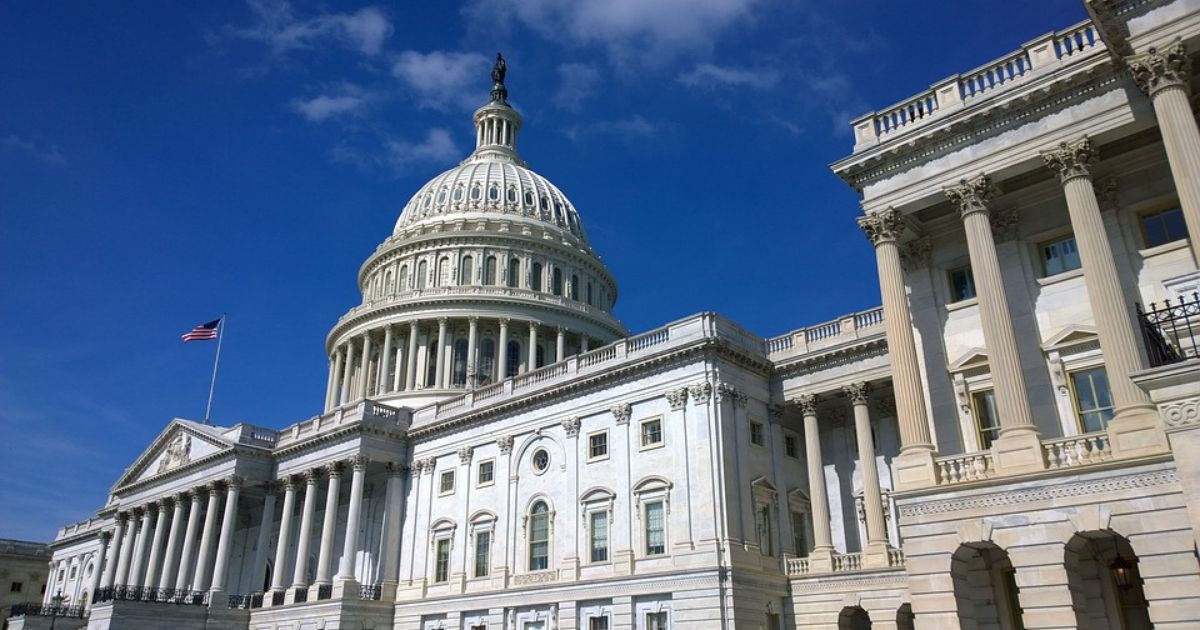119th Legislative Priorities
March 3, 2025 |
Who We Are
New Classrooms is on a mission to empower schools to move beyond the limits of the traditional classroom model so every student can access an educational foundation for lifelong success. For more than 100 years, our nation’s central approach to schooling has oriented around an individual teacher guiding the instruction of a cohort of same-aged students through a uniform curriculum, often with the aid of a textbook. But this has made it nearly impossible to meet the unique strengths and needs of each student.
In recent years, nationwide test scores have fallen to historically low levels, signaling the dramatic amount of unfinished learning that many students face as a result of this current age-based model of schooling. If these trends continue, students won’t be able to meet the needs of the 21st century economy—particularly in STEM fields—threatening our economic and national security in the face of rising global superpowers. It is critical we not only address these immediate challenges, but begin to focus on a longer-term vision for schooling.

To Modernize our K-12 Education System, the 119th Congress Must:
I. Invest in Federal Education Development
II. Remove Barriers that Limit Assessment and Accountability Innovation


I. Invest in Federal Education Development
Innovative approaches to learning, such as innovative learning models, simply cannot emerge without a sustained public investment in the development portion of educational research and development (R&D). Federal investment in early-stage development has led to breakthrough innovations in defense, health care, and energy. Now is the time to bring the same approach to the K-12 sector.
A. Pass the New Essential Education Discoveries (NEED) Act
The NEED Act would create a National Center for Advanced Development in Education (NCADE) within the Institute of Education Sciences (IES) dedicated to developing and disseminating innovative, cutting-edge practices and tools such as innovative learning models. NCADE would be required to share best practices, better coordinate student data, and undertake periodic assessments on the center’s effectiveness. The bill would authorize funding annually for seven years to establish, staff, and operate NCADE.
B. Fully Fund the Accelerate, Transform, and Scale (ATS) Initiative
To support the creation of this new federal center, Congress should also appropriate at least $75 million for the ATS Initiative at IES in Fiscal Year 2026. This includes language that directs funding toward the Seedlings to Scale (S2S) program, which provides grants to develop products that help teachers provide personalized instruction for their K-12 students. The ATS initiative is an important short-term step towards building the necessary infrastructure for NCADE’s success and making a sustained investment in transformative education development.
C. Pass the Developing and Advancing Innovative Learning Models Act
The Developing and Advancing Innovative Learning Models Act would create a dramatic and sustained investment in the development, research, and adoption of innovative learning models (ILMs). Specifically, it would authorize annual competitive funding through the IES to support the development of new ILMs, the organizational capacity of model providers, and research into the impact of ILMs on student outcomes. Subsequently, it would also authorize annual formula funding through the U.S. Department of Education to support the adoption of ILMs by states, local school districts, schools, and school communities.
What is an innovative learning model?
An innovative learning model is a schoolbased program that bundles together an interconnected set of tools, resources, systems, and instructional practices in order to shape student learning experiences toward clear objectives. Learning models may encompass the operation of an entire school or focus on a specific subject (e.g., math) or function (e.g., schoolwide culture and practices).
D. Fully Fund the Centers for Transformative Education Research and Translation (CTERTS) Authorized in the CHIPS and Science Act
The National Science Foundation (NSF) can serve as an essential implementation partner to IES. The CHIPs and Sciences Act specifically authorized the CTERTs to allow for NSF to make grant awards that support R&D for K-12 education solutions, with a special focus on implementing evidence-based STEM practices, models, programs, curriculum, and technologies. Unfortunately, nearly two years after the passage of the CHIPs and Sciences Act, this mandate remains unfunded. Congress needs to provide the necessary funding to establish CTERTS to ultimately support the implementation and scaling of education tools that are developed by NCADE.
II. Remove Barriers That Limit Assessment and Accountability Innovation
For a student-centered approach to emerge that rewards a student’s learning growth across multiple years toward college and career readiness, federal policies related to assessment and accountability need to be modernized. States need the flexibility to adopt competency-based assessment and accountability systems that encourage innovation while maintaining essential safeguards.
A. Fix the Innovative Assessment and Demonstration Authority (IADA) within the Every Student Succeeds Act (ESSA)
IADA was created through ESSA to provide the foundation for longer term innovation. However, current limitations in the structure are inadvertently preventing the types of innovation our students need. States are still required to demonstrate comparability and accountability reporting that are wholly reliant on state grade-level standards.
Instead, we need to move away from only measuring grade-level proficiency that captures just a small slice of student learning and towards a system that identifies individual students’ needs and adapts learning based on the academic standards they have and have not mastered. Critically, this work will help create a body of high-quality evidence to inform reauthorization of the Elementary and Secondary Education Act (ESEA) and larger systemic change. For this Congress, we propose the following changes:
- First, add a competency-based assessment system pilot to IADA. This would allow states to develop and implement assessments that effectively measure student growth across multiple grade levels and progress toward mastery of state academic standards.
- Second, ensure innovative yet rigorous accountability provisions in the competency-based pilot. Currently, the law restricts innovation since ESEA does not allow for competency-based accountability systems and records growth based on grade-level summative assessments. States need the flexibility to determine proficiency and design comparability outside of annual gradelevel results. Simultaneously, strong accountability provisions such as added transparency and disaggregated reporting will ensure that individual student needs are being met in the competencybased assessment pilot.
- Third, establish strong parameters for participation in the competency-based pilot. States proposals should include a detailed plan on how they will implement a competency-based assessment and accountability system.
- Fourth, require the U.S. Department of Education to establish a new peer review process. This must accommodate innovative, adaptive assessments to measure mastery of off-grade and on-grade items.
B. Increase Funding for the Competitive Grants for State Assessment (CGSA) program
The CGSA program is a critical source of funding for states seeking to create innovative assessments that better meet the needs of their students. Congress must appropriate at least $425 million for the CGSA program and direct the U.S. Department of Education to prioritize state assessment designs that “emphasize the mastery of standards and aligned competencies in a competency-based education model” as described in ESSA.

Stay informed.
Get involved.
Join the dialogue and reimagine education.